Click here for English
Premiul cel mare al acestei ediții a fost accordat proiectului FLAX Chair (Scaunul FLAX), creat de către Christien Meindertsma. Proiectul a reușit să impresioneze cu adevărat tot juriul internațional, drept urmare câștigând premiul cel mare pentru proiectul cel mai promițător pentru viitor. Scaunul FLAX este produs, după cum îi spune și numele, din in. Materialul folosit a fost obținut prin combinarea fibrei de in cu un acid polilactic (PLA). Acesta este ideal pentru că este un plastic biodegradabil, fiind produs din acid lactic.
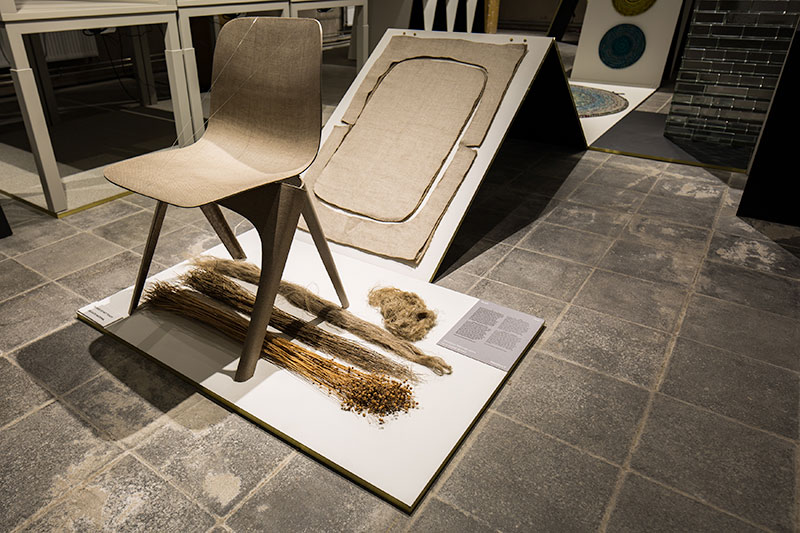
Sursă: DDW Pachet de Presă
Premiile Designului Olandez 2016 au fost acordate pentru 6 categorii: Communicare, Modă, Mediu, Produs, Servicii și Sisteme și Cercetare de design. Acestea sunt (în ordine aleatorie):
Dikke van Dale by Studio Joost Grootens – Comunicare
Sistaaz of the Castle by Duran Lantink and Jan Hoek – Modă
Biesbosch MuseumEiland by Studio Marco Vermeulen – Mediu
FLAX Chair by Christien Meindertsma – Produs
Designs for Flies by Frank Kolkman – Servicii și sisteme
Uruzgan’s Legacy by Specialist Operations – Cercetare de design
Dikke van Dale de Studio Joost Grootens
Dikke van Dale este cel mai important dicționar al limbii Olandeze. Formatul acestuia a fost complet revitalizat pentru cea de a 15-a ediție. Biroul Joost Grootens a folosit o abordare bazată pe design grafic. Prin acest proces s-au înlăturat rămășițe istorice și s-au introdus elemente de navigație noi prin culoare, ilustrație și font.
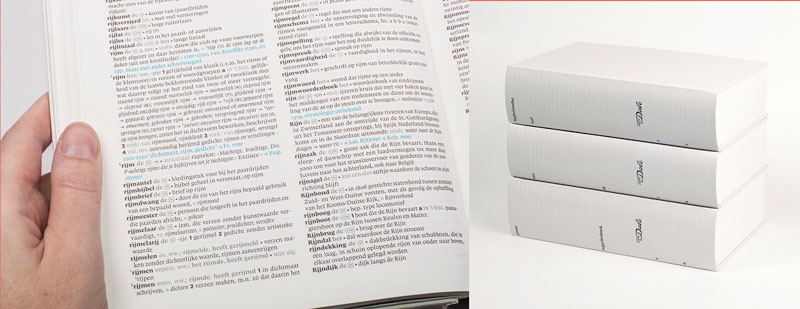
Sursă: DDW Pachet de Presă
Sistaaz of the Castle de Duran Lantink și Jan Hoek
Fotograful Jan Hoek și creatorul de modă Duran Lantink au creat sub numele de Sistaaz of the Castle un proiect despre imaginile pline de culoare ale transsexualilor care lucrează în prostituție pe străzile din Cape Town, în Africa de Sud.
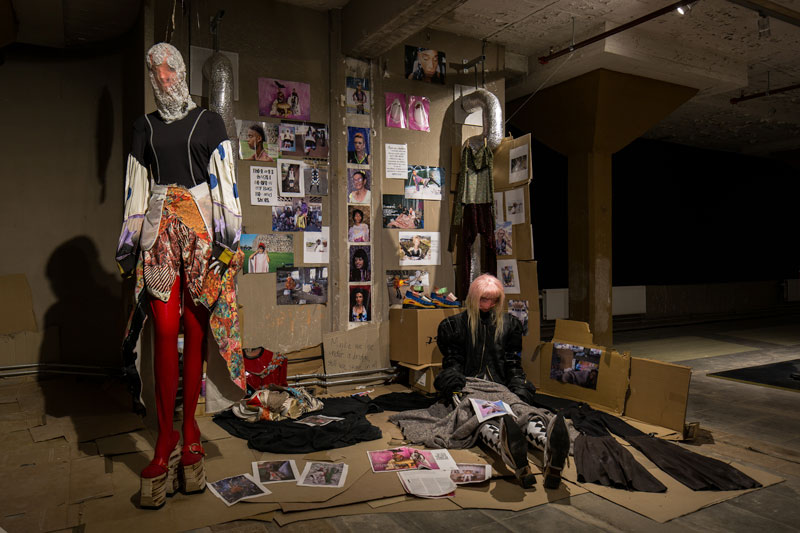
Sursă: DDW Pachet de Presă
Biesbosch MuseumEiland de Studio Marco Vermeulen
Proiectul de revitalizare și extindere a muzeului a durat aproape opt luni. Acesta a fost, în final, redeschis publicului în vara anului 2015. Acum muzeul are o atmosferă deschisă, cu spații largi și perspective frumoase asupra grădinii în curs de dezvoltare.
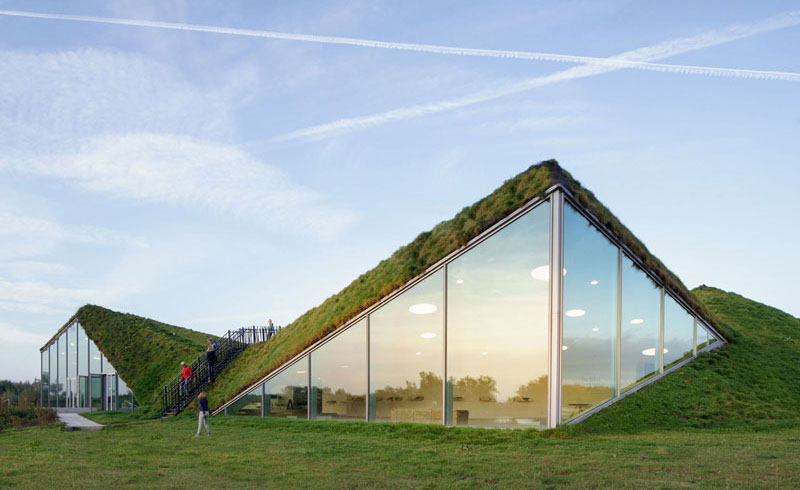
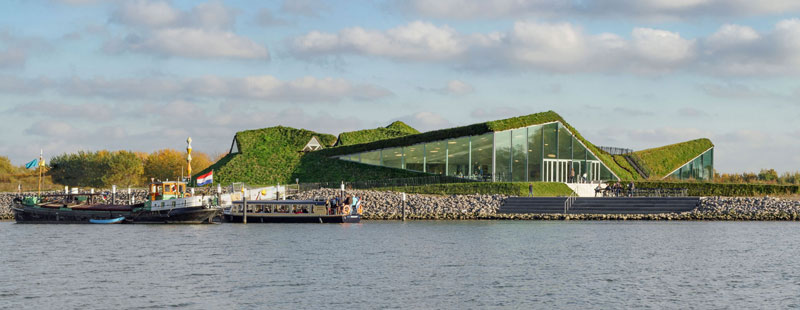
Sursă: DDW Pachet de Presă
Designs for Flies de Frank Kolkman
Designs for Flies (Creații pentru muște) este un proiect de dezvoltare a noii modalități de cercetare a bolilor rare. Din punct de vedere comercial, companiile farmaceutice beneficiază destul de rar din investiția în medicamente pentru boli rare. Drept urmare, pacienții care suferă de acestea au dificultăți în primirea unui tratament corespunzător. Acest instrument facilitează implicarea pacienților fără a fi nevoie să se deplaseze de acasă. Acesta foloseşte musculițe pentru a testa noile medicamente și a face teste personalizate pentru situația pacientului.
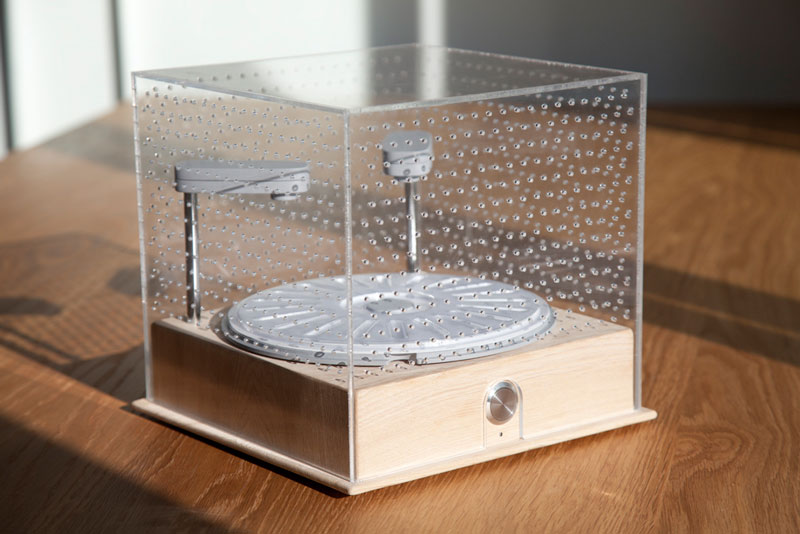
Sursă: DDW Pachet de Presă
Uruzgan’s Legacy de Specialist Operations
Începând din anul 2001, un număr mare de proiecte de recontrucție au fost terminate în Afganistan. Ele au fost realizate cu ajutorul comunității internaționale, în încercarea de a reconstrui ceea ce au distrus decenii de război. Moștenirea lui Uruzgan ne prezintă acum rezultatele acestor proiecte după retragerea din zonă a comunității internaționale. Proiectul are o abordare diferită prin faptul că nu se bazează pe numere, ci examinează impactul intervențiilor asupra celor afectați de acestea.
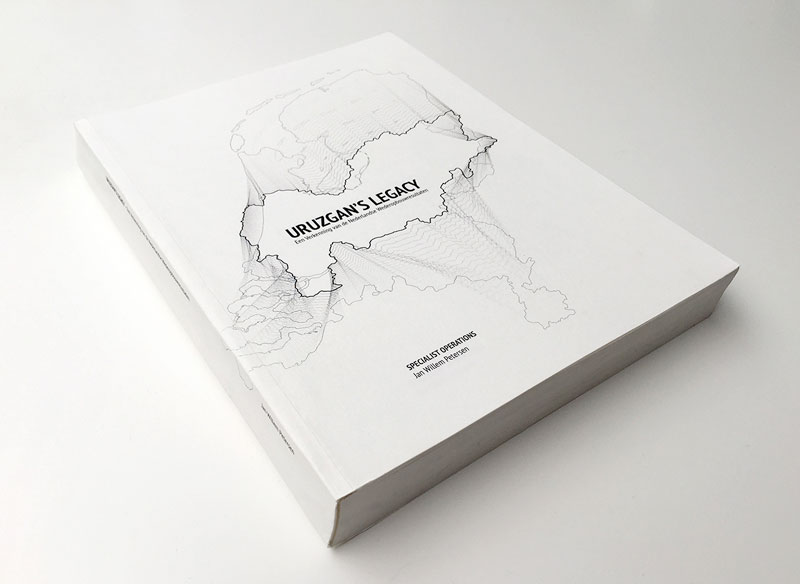
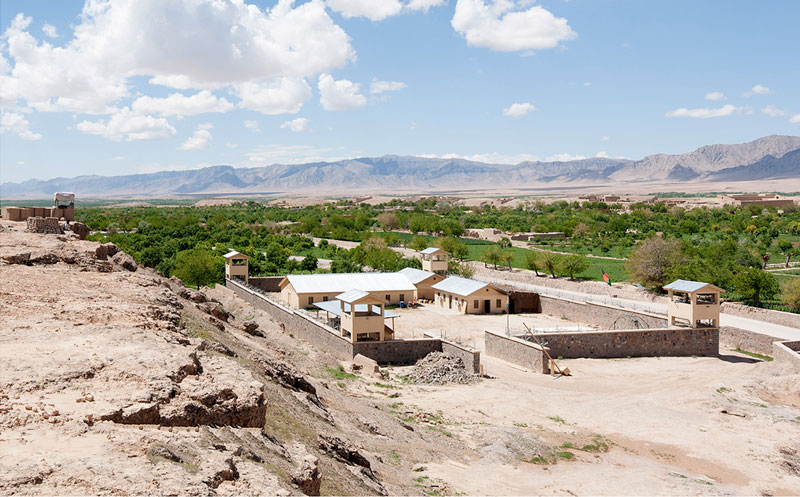
Sursă: DDW Pachet de Presă
Premiul pentru Tineretul Creator a fost luat de Tom van Soest pentru un proiect de reutilizare a deșeurilor din construcție ca material pentru cărămizi. În colaborare cu Ward Mass, Tom a înfințat StoneCycling, o companie care produce o varietate de cărămizi din aceste deșeuri: Waste Based Brick (Cărămida din Deșeu).
Tom mai lucrează de asemenea și la crearea de tehnici noi în refolosirea sticlei.

Poză: Corina Popa
Premiul pentru Cel Mai Bun Client a fost luat de Brabantia în colaborare cu Proud Design, Bovil și Studio Aandacht.
Brabantia este o companie specializată în produse pentru bucătărie și casă. Directorul general al acesteia, Tijn van Elderen, reprezintă a patra generație a acestei companii înfințate în anul 1919. El se află la conducerea acesteia din anul 2012. Pentru a menține o legătură bună cu piața, el a pornit un proces de revitalizare a imaginii companiei. Acest proces a fost realizat în colaborare cu trei agenții de creație. Proud Design a realizat sigla, Studio Aandacht s-a ocupat de imagine și fotografie, iar Bovil de comunicare și copy writing.
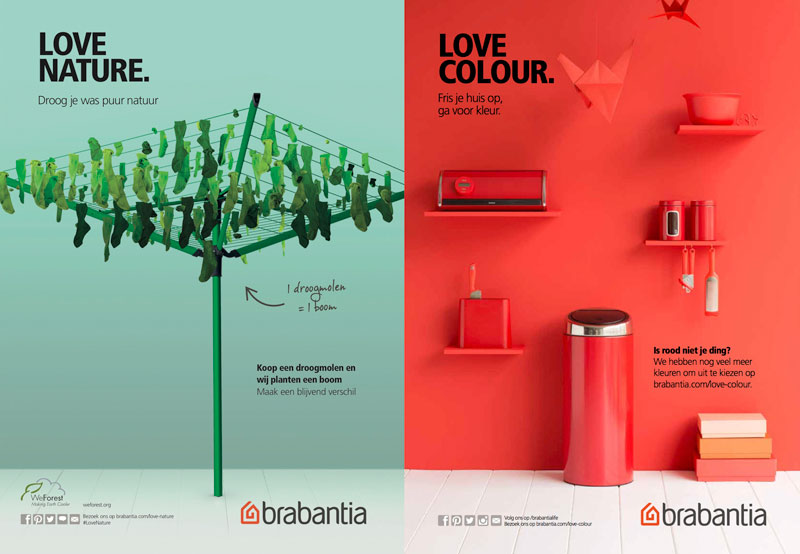
Sursă: DDW Pachet de Presă
Premiul Publicului a fost câștigat de proiectul Crystal Houses (Case de Cristal). Acesta este rezultatul unei colaborări între biroul de arhitectură MVRDV, inginerii de la ABT, Universitatea Tehnică DELFT și producătorul de sticlă POESIA. Cărămizile de sticlă produse au fost deja folosite pentru a da o nouă viață fațadei unui magazin celebru din Amsterdam.
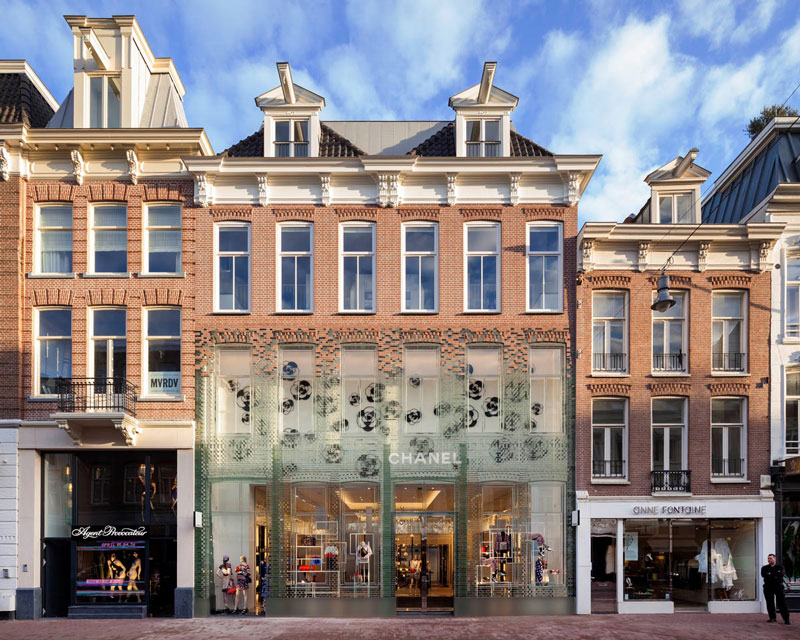
Sursă: site-ul MVRDV
Deși nu este un premiu, mi se pare important de menționat noua colaborare a organizatorilor Săptămânii Designului Olandez cu Kickstarter. Prin această colaborare a fost creată o pagina nouă de promovare și strângere de fonduri. Aici au fost prezentate unsprezece proiecte noi și interesante. Informații despre acestea au fost de asemenea disponibile și în mod fizic la locație pe întregul parcurs al evenimentului.
Ador să descopăr și să învăț despre creație și design. Plimbându-mă printre exponate, mintea mea se pierde într-o joacă de idei. E adevărat, e posibil să nu fiu chiar obiectivă și rândurile mele să nu poată transmite aceeași emoție tuturor cititorilor. De aceea, pentru că anul acesta am avut plăcerea de a petrece una din zilele de la Săptămâna Designului Olandez cu o jurnalistă locală, m-am bucurat să îi pot cere impresiile de după prima sa vizită la eveniment. Cathy Leung este producător executiv la Stichting Broadcast Amsterdam, o platformă video despre Amsterdam.
Impresia mea a fost că Eindhoven era la mare depărtare, dar călătoria mea de 78 de minute cu trenul direct din Amsterdam Centraal până în Eindhoven a fost surprinzător de relaxantă. A ajutat totuși și faptul că NS (Nederlandse Spoorwegen = Căile Olandeze – compania națională de trenuri) a avut o ofertă specială pentru Săptămâna Designului Olandez. Datorită acesteia, a fost nevoie doar de câțiva euro în plus pentru a schimba biletul de tren de la clasa a doua la clasa întâi.
Plimbarea pe jos de la gara centrală la zona industrială Strijp, unde fusesem sfătuită să încep, a fost relativ scurtă, iar sâmbătă la ora 10:30 orașul era chiar liniștit. Abia în fața clădirii Klokgebouw am început să simt evenimentul. După aceea totul a devenit foarte dinamic și aglomerat.
Cum ai perceput informația oferită de eveniment, dar și organizarea practică a acestuia?
Mulțumesc Cathy. Și mulțumim Săptămânii Designului Olandez.
Ne vedem la anu’!
The big winner of this year is the FLAX Chair designed by Christien Meindertsma. The project really impressed the jury and won the Future Award, the big prize for the most promising design for the future. The FLAX Chair is made, as the name says, of flax. The material used was obtained by combining the fiber with a polylactic acid (PLA), a biologically degradable plastic made from lactic acid.
 Source: DDW Press Release
Source: DDW Press Release
The Dutch Design Awards 2016 were awarded in six categories: Communication, Fashion, Habitat, Product, Service & Systems and Design Research. The winners are:
Dikke van Dale by Studio Joost Grootens – Communication
Sistaaz of the Castle by Duran Lantink and Jan Hoek – Fashion
Biesbosch MuseumEiland by Studio Marco Vermeulen – Habitat
FLAX Chair by Christien Meindertsma – Product
Designs for Flies by Frank Kolkman – Service & Systems
Uruzgan’s Legacy by Specialist Operations – Design Research
Dikke van Dale by Studio Joost Grootens
Dikke van Dale is the leading Dutch language dictionary. Studio Joost Grootens gave the format a new life. The 15th edition of the dictionary was designed using a graphic design approach. Remnants of history disappeared while navigational elements such as colour, illustration and typeface were introduced.

Source: DDW Press Release
Sistaaz of the Castle by Duran Lantink and Jan Hoek
Photographer Jan Hoek and fashion designer Duran Lantink created under the name Sistaaz of the Castle a project about the colourful looks of the transgender sex workers from the streets of Cape Town, in South Africa.

Source: DDW Press Release
Biesbosch MuseumEiland by Studio Marco Vermeulen
The redesign of the museum and the new wing took eight months to finish. Finally, in the summer of 2015 it was reopened to the public. It now has an open, airy feel, with beautiful views over the garden that is still being developed.


Source: DDW Press Release
Designs for Flies by Frank Kolkman
This is a project that proposes new opportunities to conduct research into rare diseases. There is little profit for pharmaceutical companies from developing medication for obscure conditions. As a result, the patients take longer to receive treatment and to get better. This tool kit allows patients to be involved in the research from the comfort of their home. The device uses fruit flies to try drugs and to make tests that are adapted to the individual needs of the patients.

Source: DDW Press Release
Uruzgan’s Legacy by Specialist Operations
Since the year 2001, thousands of projects of reconstruction have been completed in Afghanistan. This has been done with the help of the international community in an attempt to rebuild what decades of war have destroyed. As the international community is now withdrawing, Uruzgan’s Legacy documents the outcome. The project takes a different approach and instead of focusing on the numbers, it examines the impact of the interventions that were undertaken.


Source: DDW Press Release
The Young Design Award was taken by Tom van Soest with a project using building waste as a new material for bricks. Together with Ward Mass he founded StoneCycling which produces a variety of bricks from construction industry residue, the Waste Based Brick. Tom is also working on developing techniques to use waste glass.

Picture: Corina Popa
The prize for Best Client went to Brabantia in collaboration with Proud Design, Bovil and Studio Aandacht
Brabantia is a company that specialises in kitchenware and households. The CEO, Tijn van Elderen, is the fourth generation of the company that was founded in 1919. He has been in charge since 2012. In order to keep a strong bond with the market, he has initiated a process of rebranding. To that end, three creative agencies have been commissioned to design and implement the new strategy. Proud Design created the new logo and the packaging design, Studio Aandacht took care of the styling and the photography, while Bovil dealt with communication and copy.

Source: DDW Press Release
The Public Prize was won by the Crystal Houses project. This is the result of a collaboration between architecture office MVRDV, engineering office ABT & Technical University DELFT and glass producer POESIA. The glass bricks have already been used to revive the facade of a famous shop in Amsterdam.

Source: MVRDV website
Last but not least, this year’s Dutch Design Week has introduced a collaboration with Kickstarter. A crowdfunding page was created for the Dutch Design Week where eleven new and interesting design projects were started. All of them were on display during the entire period of the DDW.
I personally love discovering design and learning new things. My mind wanders as I go through the exhibitions and I just get lost in it. Because I am part of the design field, I might be slightly subjective to such events and not always able to relate my stories with everyone. As this year I had the pleasure of spending one of the days on location with a local journalist I was thrilled to be able to get her opinion as a first timer to the event. Cathy Leung is an Executive Producer at Stichting Broadcast Amsterdam a platform for English language videos about Amsterdam.
„As this was your very first visit to the DDW, how did you experience the event, the venue?
I had had the feeling that Eindhoven was miles away, but my train journey, direct from Amsterdam Centraal to Eindhoven Centraal in 78 minutes, was actually quite relaxing. It helped that there was a special DDW deal from the NS so an upgrade to first class was only a few euros extra.
It was a moderate walk from the central city station to the Strijp area where I’d been advised to start, and it was fairly quiet on the the street around 10:30 a.m. on the Saturday. Only when I was standing outside the Klokgebouw did I start to feel a buzz from the event, and from then on it was busy, busy, busy.
How did you perceive the information on display as well as the practical organisation of the event?
I thought the whole city would be ablaze with DDW flags and posters, but the signage and branding of the event was quite low key. It seems they don’t feel the need to make a huge song and dance about the event and ‘hold the visitors’ hand so much. I’d had access to a digital map and lots of online exhibitor information straight after registering, and once there I got a paper map in the press pack (that’s almost all we got), but still, I found the information for visitors could have been better presented. Maybe I should have tried the free DDW app?
And was there a project in particular that sparkled your curiosity?
In the Mind the Step section, I think the Hugsy stood out; as a blanket that soothes premature babies by playing the mother’s heartbeat, this is something that brings meaningful improvement to human life. And I just loved the scale and beauty of the submersible from Ortega.”
Thank you Cathy. And thank you for a great time DDW.
Till next year!
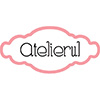


NO COMMENT